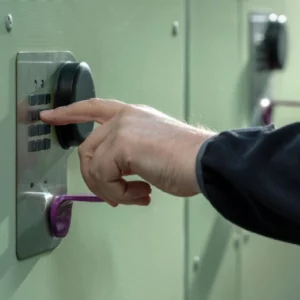Blogs
12 October 2023
Reading Time: 4 mins
Blogs
12 October 2023
Reading Time: 4 mins

Paul Marshall
Founder & CCO
LinkedInTrying to decide between cellular and satellite communications for your smart device? You’ve come to the right place.
For most IoT devices it’s important that they maintain continuous connectivity no matter where it goes, and consistently transmits critical data back to you in real-time.
For many businesses, the connectivity decision narrows down to satellite or cellular solutions. Both are commonly used for asset tracking and sometimes companies use a combination of both to achieve the coverage they require. In this article, discover which one is right for your business.
Cellular connectivity works for IoT by transmitting data packets over-the-air through wireless spectrum to mobile network operator’s cell towers. There are over 800 mobile networks in the world and millions of cell towers. At Eseye, the data then flows to one of our points of presence (PoPs) through our high-speed Multiprotocol Label Switching (MPLS) network. It then goes from the local Eseye PoP via a private network to the customer’s data centre or Cloud where incoming data is received and stored.
3GPP satellite connectivity refers to the implementation of the Third Generation Partnership Project (3GPP) standards for wireless communication in satellite networks. This technology enables businesses to establish robust and reliable communication links using satellites (including Low Earth Orbit satellites – LEOs) in areas where terrestrial connectivity is limited or unavailable.
Satellite connectivity enables businesses to overcome geographical barriers, ensures efficient and secure communication, supports scalability of operations into more challenging environments.
Satellite IoT connectivity is notoriously expensive to build into devices. . You’ll find the hardware required for cellular tracking is typically less expensive, and monthly data plans will be be more affordable too. In contrast, satellite hardware and data plans can be significantly more expensive, making cellular a more budget-friendly option for many businesses.
Cellular networks are more readily available worldwide. In fact, cellular generally provides better coverage in urban and suburban areas, where most tracking applications are used. Did you know that satellite signals can be obstructed by buildings, trees, and other obstacles, making them less reliable in certain environments?
Cellular networks offer lower latency compared to satellite networks. This low latency enables real-time tracking and communication, which can be crucial for businesses that need to monitor and manage assets, vehicles, or personnel in near real-time.
Cellular IoT connectivity protocols, such as NB-IoT (Narrowband IoT) and LTE-M (Long-Term Evolution for Machines), are designed specifically for IoT devices. These protocols optimize power consumption and extend the battery life of connected devices. In contrast, satellite IoT connectivity may require more power due to the need to establish and maintain communication links with satellites in space.
Cellular networks generally offer higher data bandwidth compared to satellite networks. This can be beneficial for applications that require the transmission of large amounts of data, such as video streaming from a dash cam or remotely connected security or CCTV cameras.
Cellular connectivity is often easier to integrate with other services and IT infrastructure, such as web-based tracking platforms, mobile apps, and cloud services. This makes it more convenient for businesses to leverage data and analytics for decision-making.
In some regions, there may be regulatory restrictions on the use of satellite technology for tracking purposes, or there may be additional licensing requirements. Cellular connectivity may be a simpler and more compliant option in such cases.
t42 specialises in wireless systems that track, monitor and protect a variety of assets. Its Helios GPS solution provides automated real-time information on vehicles and drivers, via IoT-enabled devices. t42 required reliable and comprehensive cellular coverage to expand its footprint and support customers globally.

Integrating Eseye’s multi-IMSI AnyNet+ eSIM into its Helios system has brought t42 and its customers consistent and fast global IoT connectivity. Wherever the asset is, t42’s devices instantly connect to the best and most available network, and switch seamlessly to another if connectivity is interrupted, guaranteeing uptime of almost 100%. In addition to tracking and securing vehicles, this enables t42 to offer advanced features such as battery status and safety warnings.
BT Final Mile is a smart locker service, introduced by BT with the goal of ensuring that telecoms engineers are no more than 15 minutes’ drive from the parts they need. Its network of intelligent lockers is connected by IoT technology.

Eseye’s in-house IoT device design consultancy brought BT’s vision from idea to proof of concept in weeks, overcoming challenges such as the need for the units to be exceptionally robust. Eseye’s AnyNet+ SIM card is embedded into each locker, delivering 100% cellular connectivity by ensuring it’s connected to the strongest possible network at all times. Engineers are instantly alerted when items arrive at the box, and receive one-time codes to unlock them. The devices also track usage and system functionality, and allow firmware updates to be made over-the-air.
As a result of the initiative engineers spend less time travelling, which has enabled BT to reduce its delivery costs and carbon footprint, as well as provide a better service.
While satellite IoT connectivity plays a crucial role in providing coverage in remote areas and specific industries or use cases, cellular IoT connectivity offers numerous advantages that make it an attractive option for the majority of businesses.
From wide coverage and cost-effectiveness to lower latency and agility in deployment, cellular IoT connectivity provides a scalable, efficient, and future-ready solution for a wide range of IoT applications. By carefully evaluating their requirements and considering the reasons highlighted in this blog, businesses can make an informed choice and embrace the potential of cellular IoT connectivity to drive their digital transformation efforts.
It’s important to weigh up which connectivity type is best for your use case and budget. New technology advancements in cellular connectivity such as eUICC and multi-IMSI make cellular an extremely attractive choice for businesses that want to remain competitive.

Paul Marshall
Founder & CCO
LinkedInPaul is one of Eseye’s co-founders. With a background in senior design engineering, Paul’s focus is on ensuring his development, operations and support teams deliver solutions that work faultlessly in the field.
Paul was co-founder of CompXs, with Ian Marsden, and developed the world’s first IEEE 802.15.4 radio. Before CompXs, Paul was in senior radio design at Philips.
Predictable performance is the key to IoT success. Let our experts test your device for free. Receive a free trial IoT SIM trial kit and speed up your IoT deployment with expert insights and seamless connectivity.